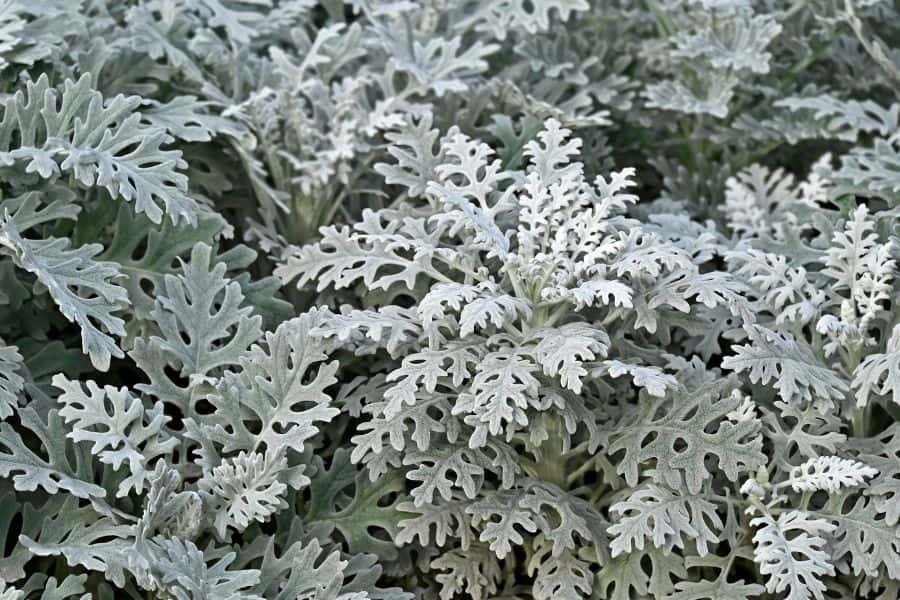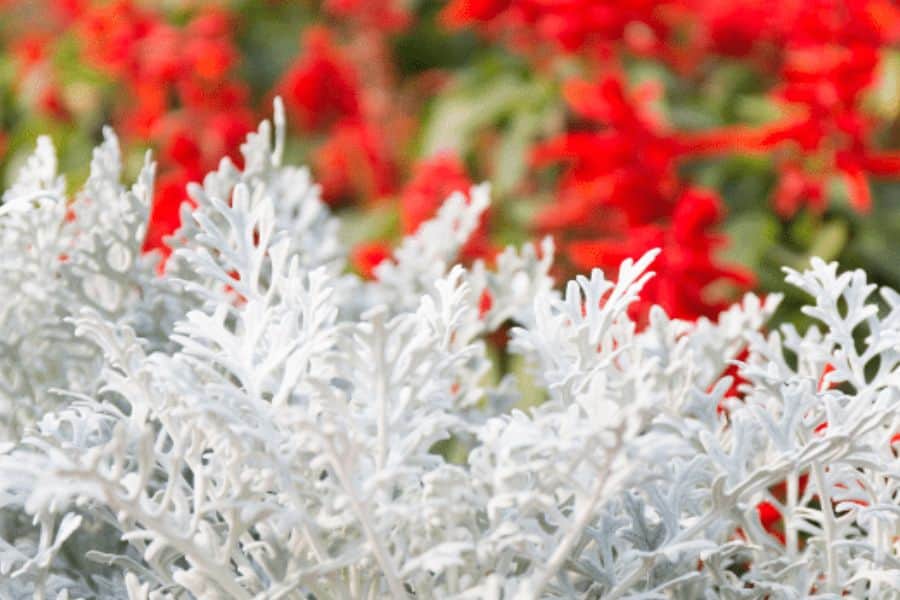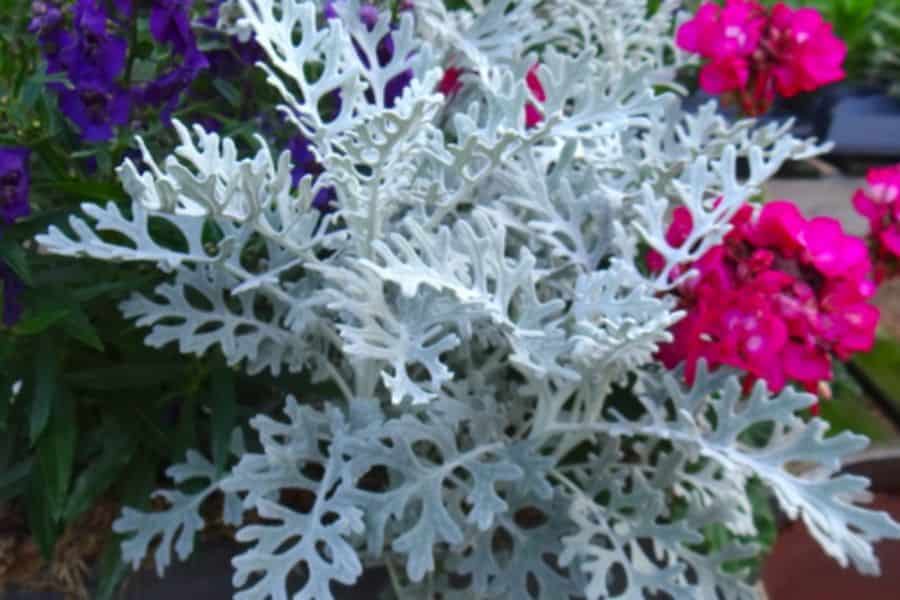Native to the Mediterranean region, Dusty Miller is a beautiful and versatile plant widely cultivated around the world for its striking silver foliage and use in both commercial and residential landscapes.
It can grow up to 30 inches in height and 12 inches in width. Dusty Miller will be found at Martin Garden Center almost all year round. The plants are usually available in 4-packs and flats, but we often have larger 4″ plants available.

Growing and Caring for Dusty Miller
Dusty Miller thrives in well-draining soil and prefers full sun to partial shade. Plant it in a location that receives adequate sunlight to ensure optimal leaf coloration and growth. While it can tolerate drought once established, regular watering is needed during the initial stages to help the plant establish its root system. Be cautious not to overwater, as the plant is susceptible to root rot in excessively wet conditions. Applying a layer of mulch around the base of the plant can help retain soil moisture and regulate temperature.
Pruning or pinching back the plant can promote bushier growth and prevent it from becoming leggy. Deadheading spent flowers is unnecessary, as dusty miller is primarily grown for its foliage. Removing faded leaves and spent flower stalks can keep the plant looking neat and tidy. Dusty Miller is generally resistant to pests and diseases, making it a low-maintenance addition to your garden.
Leaves and Flowers
Dusty Miller’s leaves are silvery-gray in color, giving the plant its common name. The leaves are deeply lobed and have a soft, velvety texture, which makes them a popular choice for tactile gardens. The flowers are small and yellow. They are not particularly showy, and are often removed to keep the showy foliage, but the flowers add a subtle pop of color to the plant if wanted by the customer.

Uses in the Garden
Dusty Miller is a popular choice for landscaping due to its striking appearance and ability to thrive in various growing conditions. It is commonly used in mixed borders, mass plantings, and as a ground cover. Dusty miller’s silvery-gray leaves contrast with brightly colored flowers, and its soft texture adds interest and depth to garden beds.
Dusty Miller is also drought tolerant, making it ideal for Xeriscaping. The plant is also a popular choice for container gardens. Due to its compact size and attractive foliage, it is a good choice for hanging baskets and window boxes. It can be paired with various other plants, including flowering annuals and perennials, to create a stunning display when planted in containers. A simple pinch will keep Dusty Miller bushy and full.

Frequently Asked Questions
How To Propagate Dusty Miller?
Dusty Miller can be propagated through both seeds and cuttings. Using cuttings is a quicker way to get new plants that are genetically identical to the parent plant. First, choose healthy, non-flowering stems for cuttings. Look for stems that are around 4 to 6 inches long. Cut the selected stem just below a leaf node using clean and sharp scissors or pruning shears. Remove any leaves from the lower part of the cutting, leaving only a few leaves at the top.
Fill small pots or trays with a well-draining rooting medium. A mix of perlite and peat moss or a commercial seed-starting mix works well. Insert the cut end of the Dusty Miller cutting into the rooting medium, burying it about 1 to 2 inches deep. Water the medium to settle it around the cutting. Cover the pots or trays with a plastic dome or place them inside a plastic bag to create a humid environment.
Put the pots or trays in a location with bright, indirect light. Dusty Miller cuttings typically root within a few weeks. You can gently tug on the cutting after a few weeks to check for resistance, indicating the presence of roots. Once the cuttings have rooted, transplant them into larger containers or directly into the garden.
Is Dusty Miller Annual or Perennial?
At Martin Garden Center, we consider Dusty Miller an annual in the SC Upstate (Zone 8A)although approximately 60% of the plants survive from one winter to the next.
Is Dusty Miller Pest Resistant?
Dusty Miller plant is not susceptible to pests, thus making it a low maintenance choice for the landscape. Furthermore, because of its soft velvety texture, deer tend to avoid eating it … yum yum … which makes it a great plant for rural gardens where deer can wreak havoc.
How Big Does Dusty Miller Get?
Dusty Miller generally forms compact mounds that range from 8 to 15 inches in height, with a similar spread. In optimal conditions, such as well-draining soil and full to partial sunlight, Dusty Miller may achieve a slightly larger size. We highly recommend pinching Dusty Miller 1-2 times each year to keep it compact.
Is Dusty Miller Poisonous To Dogs?
Dusty Miller contains compounds called pyrethrins, which can be toxic to dogs if ingested in large quantities. Pyrethrins are natural insecticides found in various plants, including some members of the Asteraceae family, to which Dusty Miller belongs. While dusty miller is not typically considered highly toxic to dogs, ingestion can cause gastrointestinal upset, including vomiting, diarrhea, and drooling. If you suspect that your dog has ingested dusty miller or is showing signs of illness after being in contact with the plant, it’s essential to contact your veterinarian for guidance.
